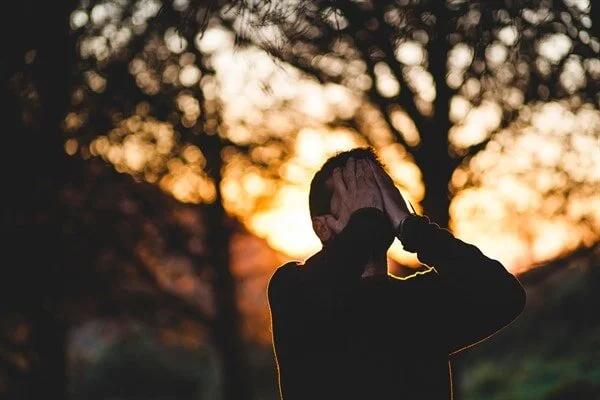My approach to anxiety treatment is not about managing and controlling your anxiety symptoms. Instead, the goal is to develop a new relationship with your anxiety. This involves the willingness to experience, even welcome your anxious thoughts and feelings without trying to avoid them or figuring them out. When you are able to be in the presence of your anxiety in an open, nonjudgmental way, you create enough emotional flexibility to choose your actions, not based on what the anxiety wants you to do, but what is more in line with what you value.
A REALLY GOOD QUESTION
One day, between classes, I ran into Dr. Hendricks in the men’s restroom. We were standing at the sink, washing our hands, combing our hair. He looked at my reflection in the mirror, and, with just a hint of playfulness in his eyes asked, “How are you doing today, Mr. Hardwick…and why?” Then he quickly walked away, leaving me with a question that obviously I have never forgotten.
Fear, Anxiety, and COVID-19
Earlier I wrote a blog that talked about the difference between fear and anxiety (Fear and Anxiety: What are They?). I described how fear is focused on the present, a real threat that is right in front of you. It is fair to say that COVID-19 is more than right in front of us; it is all around us. Not just the spread of the virus but the media coverage about it.
The Gift of Acceptance
One the significant barriers to getting beyond your anxiety is to frame it as something wrong with you that you have to fix, or a problem that you have to solve. When you view anxiety this way, the only options you have are to avoid or fight off the thoughts and feelings that contribute to your anxiety. And yet, the truth is everybody, everybody, experiences anxiety.
How to N.A.M.E. Your Feelings
There are two components that play a role in your anxiety: thoughts and feelings. In a previous post I considered the way our thinking can contribute to anxiety (Loosening the Grip of Your Mind’s Stories). In this post I want to consider our feelings. First of all, what are we really talking about when we consider feelings or emotions. Let’s take anxiety for example. When you say you are feeling anxious, what is happening? Emotions happen mostly in our bodies.
Loosening the Grip of Your Mind’s Stories
Anxiety and Sunsets
In Oklahoma, the state where I live, we have some amazing sunsets. Over the last few weeks, several of my Facebook friends have posted some pictures of glorious sunsets (not so many sunrises…I wonder what that is about). It could be that the sunsets have been particularly brilliant; I like to think it is because the corona virus is keeping people at home and they are taking advantage of these amazing gifts nature is offering them.
Do You Really Have Control?
Imagine that you aren’t satisfied with your job. You have options. You can quit your job and look for another, or you can get some training for a new direction in your career. Or suppose that you have a close friend to whom you haven’t spoken in years. You can reach out to them by phone, Facebook, or email. You aren’t satisfied with your physical condition, so you join a gym, get a personal trainer, and start to work out. All of these situations have something in common. You see something about your life that you want to change, you figure out what actions will help you with that change, and you do them.
The Anatomy of Anxiety
To address a problem like anxiety, it is good to have a clear understanding of all of its components. Perhaps it sounds strange to talk about the components of anxiety; isn’t anxiety just a feeling we have. Well, feelings are one part of anxiety, but it has other elements as well. It is important have a deep understanding of the anatomy of anxiety so we know how to respond to it and treat it.
Fear and Anxiety: What are They?
Fear and anxiety are a normal and natural part of living. We are born with the capacity to experience fear and anxiety. Of course, you may already know that since it seems you are living with these two feelings all the time. But what are fear and anxiety? How are they similar? How are they different? What role do they play in our lives?









